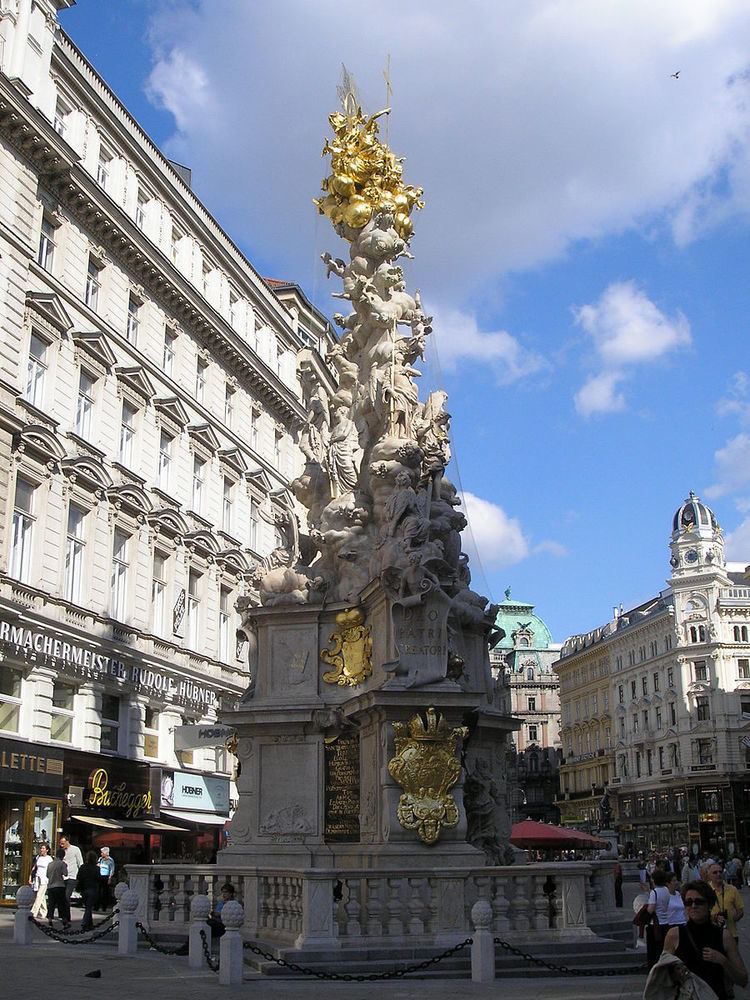Artist Matthias Rauchmüller Media Copper, Bronze | Created 1693 | |
 | ||
Address Graben, 1010 Wien, Austria Hours Open today · Open 24 hoursMondayOpen 24 hoursTuesdayOpen 24 hoursWednesdayOpen 24 hoursThursdayOpen 24 hoursFridayOpen 24 hoursSaturdayOpen 24 hoursSundayOpen 24 hoursSuggest an edit Similar St Peter's Church, St Stephen's Cathedral, Innere Stadt, Karlskirche - Vienna, Hofburg | ||
The Pestsäule (English: Plague Column) or Dreifaltigkeitssäule (English: Trinity Column) is a Holy Trinity column located on the Graben, a street in the inner city of Vienna, Austria. Erected after the Great Plague epidemic in 1679, the Baroque memorial is one of the most well-known and prominent sculptural pieces of art in the city.
History
In 1679, Vienna was visited by one of the last big plague epidemics. Fleeing the city, the Habsburg emperor Leopold I vowed to erect a mercy column if the epidemic would end. In the same year, a provisional wooden column made by Johann Frühwirth was inaugurated, showing the Holy Trinity on a corinthian column together with nine sculpted angel (for the Nine Choirs of Angels).
In 1683, Matthias Rauchmiller was commissioned to do the marble works, but he died in 1686 and only left a few angel figures. Several new designs followed, among others by Johann Bernhard Fischer von Erlach, who designed the sculptures at the base of the column. Finally, the project management was assigned to Paul Strudel, who based his work on the concept of theatre engineer Lodovico Burnacini.
Below the Trinity figure, Burnacini envisioned a cloud pyramid with angel sculptures as well as the kneeling emperor Leopold, praying to a sculpture of faith. Among others, the sculptors Tobias Kracker and Johann Bendel contributed to the column. The column was inaugurated in 1693.
In spite of the long construction period, the frequent amendments of the design and the large number of sculptors involved, the monument appears quite homogeneous. During the design period, it changed from a conservative memorial column to a high baroque scene, narrating a story in a theatrical form. The monument thus indicates the transition to the era of High Baroque in Vienna. It highly influenced the style and was imitated in the whole Austrian region.
